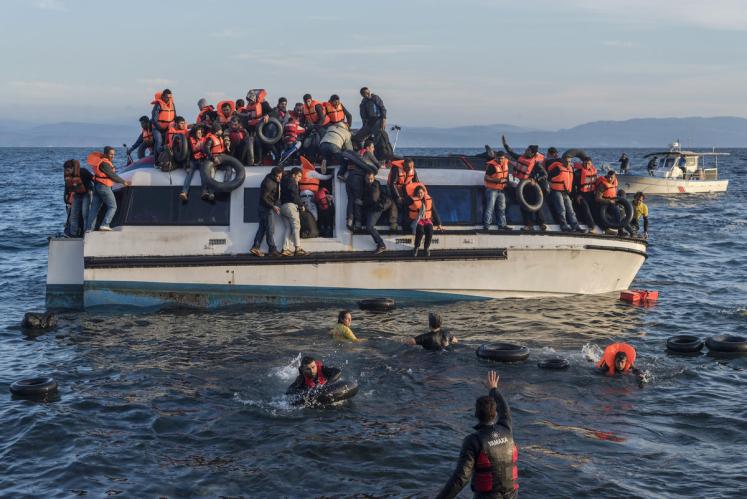What began in 2014 as news reports of boats sinking in the Mediterranean has today grown into one of the world’s most tangled Gordian knots – a profound humanitarian and security challenge affecting millions of people from the UK to the Levant and Afghanistan. It has also set the United Nations and the European Union (arguably our two most significant multilateral ventures) on a collision course.
This mass movement of people from many nations, seeking both sanctuary and opportunity, has been a contentious, public test of international post-World War II commitments. The unpredicted “El Niño effect” in east-west migration, sparked by the disintegration of Syria and Iraq, arrived at the worst possible time for both institutions. It caught Europe at the peak of an unprecedented fiscal and identity crisis, and the UN at the limit of its massive humanitarian response in Syria’s exhausted, refugee-hosting neighbourhood. The effort to find solutions has highlighted profound weaknesses in Europe’s internal cohesion and self-management, and the UN’s capacity to serve its schizophrenic national security and human security agendas.
In this context, a new paper published by the Friedrich-Ebert-Stiftung, written by Claire Hajaj and Tuesday Reitano of the Global Initiative against Transnational Organized Crime, describes valuable lessons from the Middle East, which have been lost in translation on the European continent and in UN Headquarters. It argues that “finger in the dam”, short-term, national security-focused responses to families on the move are self-defeating; that humanitarian operations cannot and should not be asked to substitute for political consensus; and that the UN itself, as a divided institution, is poorly equipped by its leaders to bring that consensus where it’s most needed.
The paper also argues that the distinction between migrants and refugees is less clear than UN advocacy would have it and that defaulting to such set-pieces is one of the UN’s key leadership weaknesses when looking ahead to Agenda 2030. The millions now making their way west represent the core challenges of this Agenda: the dynamic and permanent link between fragile and developed states, the clash it generates between national security demands and human security ideals, and the power of human aspiration to surprise and reshape global decision-making. The world is attempting to navigate these issues with institutions and conventions developed in a different age, like the 1951 Refugee Convention. Updated, purpose-made tools and relationships are long overdue.
The UN’s capacity to lead on this depends on how useful it can make itself to rich and poor alike, striking the right balance between principles and pragmatism. It also depends on healing the UN’s fractious internal divides – by connecting its lofty, over-ambitious policies with on-the-ground operational practicalities across its security, development, and humanitarian wings.
This article is based on a paper written for Friedrich-Ebert-Stiftung.
Suggested citation: Claire Hajaj., "Caught in the Crossfire: United Nations Security and Policy Perspectives on the Refugee Crisis," UNU-CPR (blog), 2016-06-28, https://unu.edu/cpr/blog-post/caught-crossfire-united-nations-security-and-policy-perspectives-refugee-crisis.



